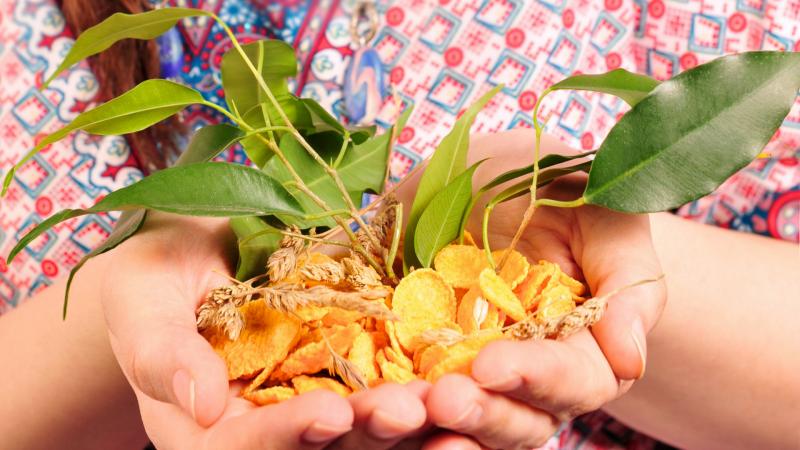
Angiosperms, or flowering plants as they are commonly known, dominate the plant kingdom with over a whopping 3.5 lakh species. Unlike the bisexual plants that are predominant, where both the reproductive structures are present in the same flower of the plant, some have the male and female flowers in different plants. Such plants are called dioecious plants, and there are over 15,600 species of them across the world. Many of these plants have been used traditionally as food, medicine and timber for over thousands of years. In a recent study, researchers from the University of Oslo, Norway, and The Institute of Trans-Disciplinary Health Sciences and Technology, Bangalore, have explored some aspects of the bond between folk medicine and the sex of the plants used for the same.
The earliest record of medicinal herbs such as opium come from the Sumerian civilisation, followed by the Chinese who used ginseng and cinnamon bark as food and in the preparation of medicines. Excavations in the Gangetic region in central India present evidence for the use of medicinal plants since 4000 years. The Vedas too have a record of spices such as nutmeg, cloves and pepper used as medicinal plants.
In the study published in the Journal of Ethnopharmacology, the researchers have documented the knowledge and use of dioecious plants by Malayalis—a hill-dwelling ethnic group living in the Eastern Ghats of Tamil Nadu. They have pondered on questions like—do folk healers have a preference for plant genders; if so, how are these gender differences in plants perceived; and how the Indian systems of medicine have documented the concept of plant gender and preferences for it.
“The Indian Systems of medicine (ISM) is one among the codified systems of medicine in the world. We need to validate the traditional knowledge of medicinal plants and its formulation via modern scientific tools”, says Mr Gopalakrishnan Saroja Seethapathy, a research scholar at the University of Oslo and an author of the study. “The world herbal trade is expected to reach USD 7 trillion by the year 2050. Although China has outperformed India in this, in 2014, the Prime Minister of India admitted this as a challenge and emphasized the need to find ways to promote Ayurvedic medicines”, he adds, describing the current surge in the interest in alternative systems of medicines.
The researchers started off by compiling a comprehensive list of dioecious species used in traditional Indian medicine with data from the Indian Medicinal Plant Database. They then held interviews with folk healers—unlicensed practitioners of healing using conventional practices—and found that they have a gender preference for 13 species of plants including ten trees, two woody vines and one shrub. They differentiated the genders by looking at the plant size, and the presence and size of fruits. The interactions between the researchers and Ayurvedic doctors revealed that although Ayurvedic literature does show evidence of gender preference for medicine, the concept of gender among plants is mentioned in classical works like Charaka Samhita, Vriksh Ayurveda, and Raja Nighantu.
In several instances, the researchers noted that the use of the plants determined the preference of a particular gender. For example, in the case of toddy (palm wine), folk healers prefer female plants as they yield more toddy than male plants. Similarly, the timber of male palm trees like Borassus flabellifer (Palmyra palm) and Drypetes sepiaria (Hedge boxwood) is preferred for constructing houses, huts and making furniture because the wood is of the required size and is more durable than the timber from female trees. On the contrary, the wood of female Diospyros ebenum (Ceylon ebony) is preferred as carving the wood from the male plant is tough.
However, this sexual preference comes at a cost, say the researchers, who point out the threat to the existence of such dioecious species in a region. Also, selective logging of plants of a particular gender owing to demand can result in over-exploitation. As an attempt to conserve dioecious species that are heavily used, several conservation efforts are in place. “There are numerous schemes where Government of India supports the cultivation of medicinal plants. Cultivation is one way, and the other is creating awareness among plant collectors/harvesters about sustainable harvesting”, says Mr Seethapathy.
The study of plant diversity and the practical uses of plants through the knowledge of local people (ethnobotany) contribute to the fields of drug discovery and drug development immensely. These studies highlight the rate at which this valued knowledge is being forgotten and lost. As a boost to the field of ethnobotany, scientists around the world are attempting detailed molecular studies of male and female plants. The current research is a step in the same direction.
“One aspect is to devise measurements of selective logging by people and conservation of dioecious plants. The other is a metabolomics approach for dioecious plants to understand if there is any phytochemical variation between male and female plants. If true, it would be interesting to know the active compounds that vary between male and female plants and study its bioactivity”, remarks Mr Seethapathy before signing off.






